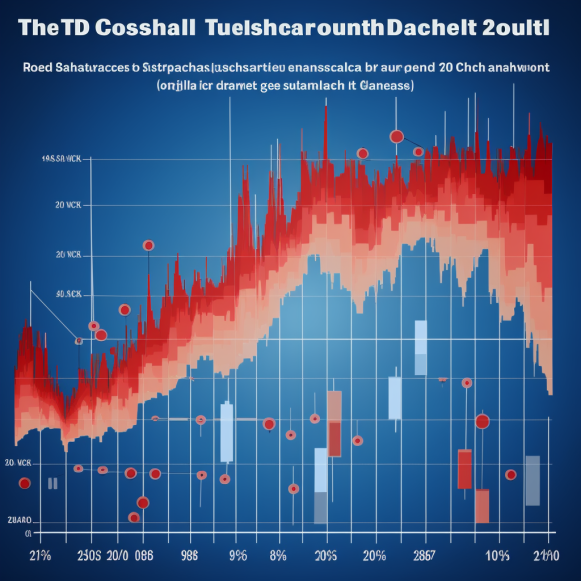Deutsche Bank examined economic data going all the way back to the 1700s and narrowed down the 4 criteria that indicate a recession is coming — and the US economy just triggered the final warning sign

- A team at Deutsche Bank recently analyzed 323 years of economic data across the G7 nations.
- They found the triggers behind recessions across history, including one that the US just hit.
- They also believe recessions will become more frequent, and we have no one to blame but ourselves.
Since the beginning of the year, market analysts have speculated on whether the US economy would experience a recession. And, while 12 months of speculation may seem like an eternity to investors desperate for an answer, it is actually a brief period in economic history.
Jim Reid, Deutsche Bank’s head of global economics and thematic research, decided to go back a little further than January 2023. In a recent note to clients, he detailed his analysis of 323 years of economic data from around the world, detailing recessions, expansions, and market downturns dating back to 1700.
Reid and his team discovered numerous patterns in all of the data, including the typical warning signs of a recession.
Unfortunately for investors, the US economy has just triggered the fourth and final warning sign that a recession is imminent.
It appears that history is about to repeat itself.
A long, dark history of recessions
Reid focused his analysis on the G7 countries of the United States, United Kingdom, Canada, France, Germany, Italy, and Japan. Naturally, different countries’ methods for calculating economic inputs and outputs differed and evolved over time.For example, scholars and economists in the United Kingdom have been tracking recession data since 1700, whereas Italy only began tracking recessions in 1980. GDP data in the United States began to be reported quarterly in 1947.
However, Reid and his team relied on official reports, academic research, and their own well-founded estimates to reach their conclusions, one of which was the number of recessions experienced by each country.
According to Reid, “the US has had more of a boom-bust culture than its peers over the last century, with the most recessions in the G7,” as illustrated by the chart above. “However, it has also experienced higher productivity growth over this period, indicating that recessions aren’t necessarily bad for economic growth when viewed over a longer time horizon.”
There will be more recessions, which may be beneficial to the economy.
Indeed, Reid contends that the 34 recessions that the United States has experienced since 1854 have been beneficial to the economy. Recessions, in a sense, trim the fat — poor-performing companies or industries in a bubble bear the brunt of the impact, while better-performing companies survive and the remaining economic resources are efficiently allocated to the survivors.
That’s good news to offset an unwelcome prediction: Reid predicts that the United States will experience more recessions in the coming years, based on historical data.
Reid explained that governments have historically allowed the business cycle to run its natural course, with booms and busts occurring on a regular basis. Because of this laissez faire attitude, the busts were sometimes unusually large, but the economy recovered quickly.
Governments, on the other hand, now prioritize avoiding recessions at all costs. Since abandoning the gold standard in the 1970s, the US government has more frequently artificially propped up the economy during times of stress that would have naturally led to a downturn in the past.
To illustrate, the United States experienced nine recessions between 1902 and 1942, and ten between 1942 and 1982, according to Reid. Only four recessions have occurred in the United States between 1982 and 2022.
Since the great financial crisis, this supportive economic policy has been especially acute in the United States.
“Interestingly, in terms of GDP, the GFC was not overly severe in comparison to many previous recessions,” Reid wrote. “However, this is due in part to policymakers’ desire to avoid the inaction seen during the Great Depression, and they launched unprecedented interventions in order to avert a much larger slump.”
Reid cites three reasons why he believes recessions will become more common. First, statistically, the United States has been extremely fortunate to have experienced so few economic shocks over the last four decades — and our good fortune may be running out. According to Reid, black swan events such as geopolitical shocks, natural disasters, and global pandemics occur more frequently than people realize.
“And that’s before we even get to the more traditional causes of recessions, like monetary tightening or speculative bubbles,” Reid wrote. “As a result, the fact that the United States has only experienced four recessions in the last four decades is extremely unusual, and one that is unlikely to be repeated without an enormous amount of good fortune.”
Second, Reid believes that inflation will continue to rise above the Federal Reserve’s 2% target. However, with all of the leverage in the financial system as a result of the GFC and the post-pandemic recovery, the Fed will have fewer tools to deal with high inflation.
Finally, while budget deficits were once used sparingly to support the economy, they are now “a day-to-day fact of life and have very likely helped ensure long business cycles over the last 40 years once the shocks of the 1970s receded,” Reid wrote.
However, with interest rates having risen dramatically in recent years, running a multi-decade high deficit becomes a much more expensive proposition. “Additionally, because economies are increasingly constrained on the supply side today, further stimulus will be much more inflationary than it was in the immediate post-GFC environment,” Reid wrote.
4 indicators of an impending recession
So, how can you predict a recession before it happens?
There are numerous outliers that can cause an unexpected economic downturn, such as the black swan events mentioned above. Reid, on the other hand, discovered several historical factors that have a direct correlation to the likelihood of a recession.
Unsurprisingly, monetary tightening has been a factor in several previous recessions, particularly in the United States, which is particularly sensitive to rising interest rates when compared to other G7 countries.
“Over the last 170 years, when US short-end rates have risen by either 1.5pp (12-m rolling) or 2.5pp (24-m rolling), there has been a recession within 36 months between 69-74% of the time,” Reid wrote. “When US inflation rises by more than 3 percentage points in 24 months, there is a 77% chance of a subsequent recession.”
“The US economy also appears to be the most sensitive to inflationary spikes,” Reid added. When US inflation rises by more than 3pp (24-m rolling) or 5pp (24-m rolling), there is usually a recession within 36 months.”
Other major causes of recessions included an increase in oil prices, tighter government budgets, and a yield-curve inversion.
However, recessions tend to take hold of the economy when all of these factors come into play.
Reid looked at instances of multiple recession indicators happening at the same time within a 12-month window at any point in the 36 months preceding previous recessions. He focused on four indicators in particular because they all occurred within the last three years:
- Inflation rising by 3% over a rolling 24-month period
- The yield curve inverting
- Short-term interest rates rising 1.5 percentage points over a rolling 12-month period
- Oil rising 25% over a rolling 12-month period
Although the budget deficit has not decreased, failing to meet four of the five indicators is bad news for the US economy. In fact, when all four indicators are triggered at the same time, the US has a 76% chance of entering a recession.
With the recent surge in oil prices completing the list of recession triggers, investors should be cautious of what lies ahead. “Clearly, this does not guarantee recessions,” Reid wrote, “but it shows that if a US recession does occur soon, the macro ingredients are in place, consistent with previous recessions throughout history.”





